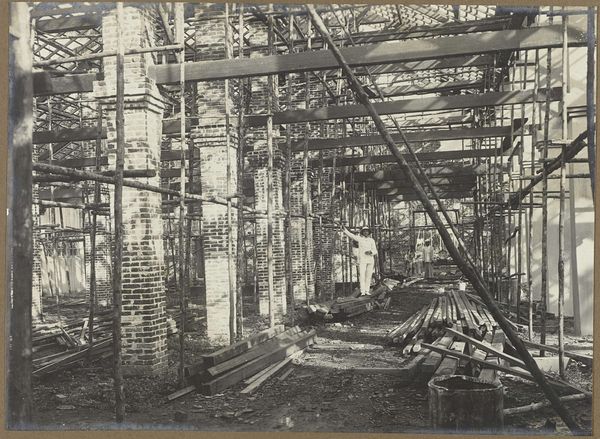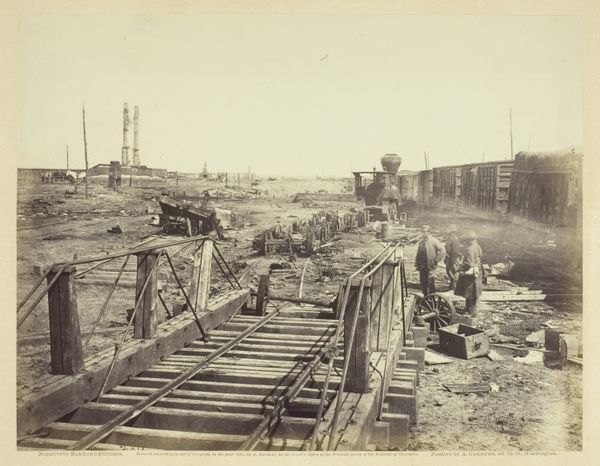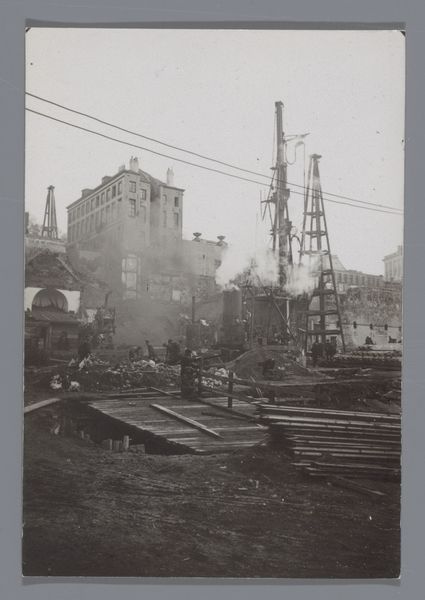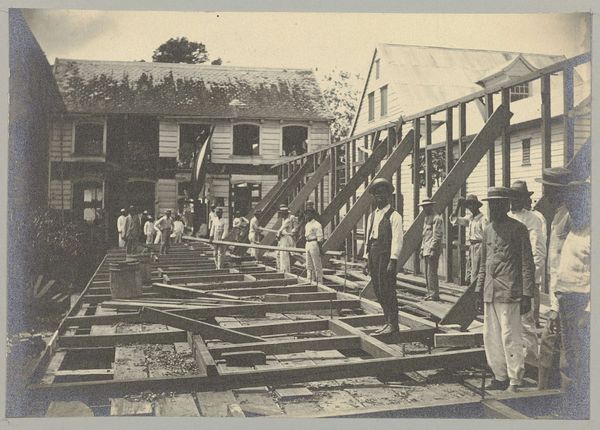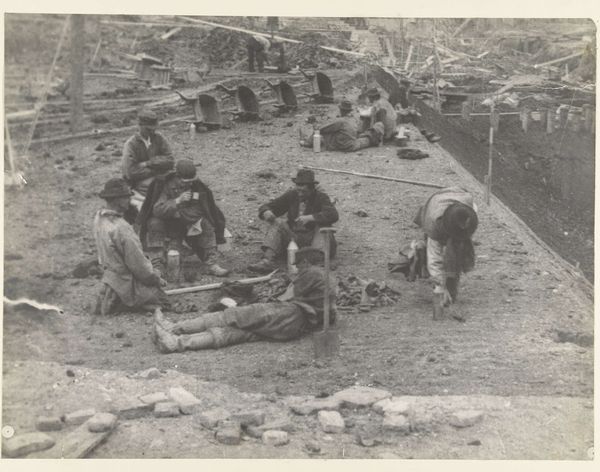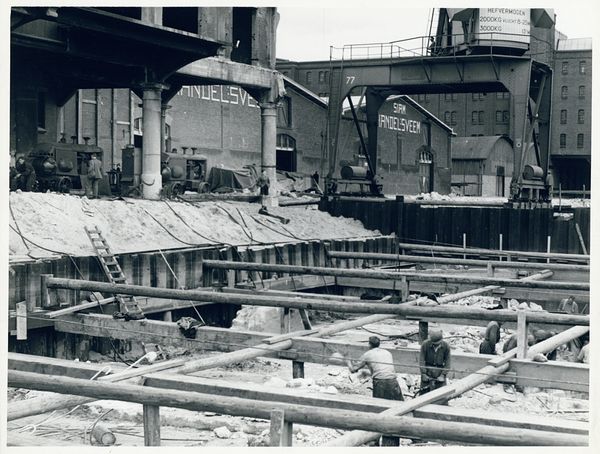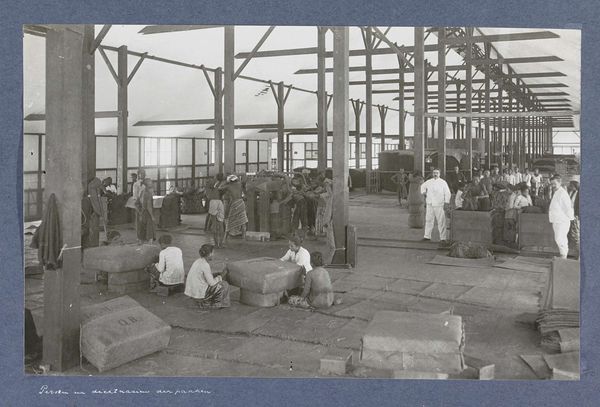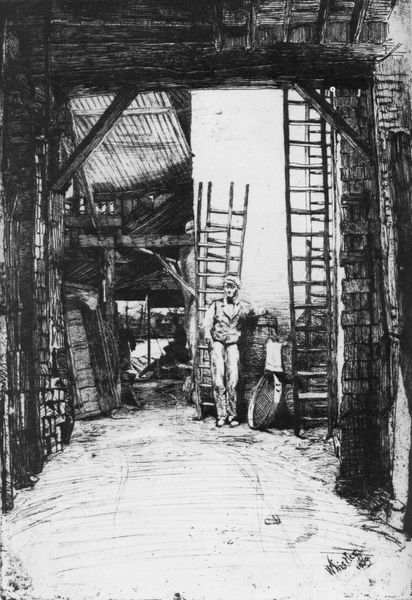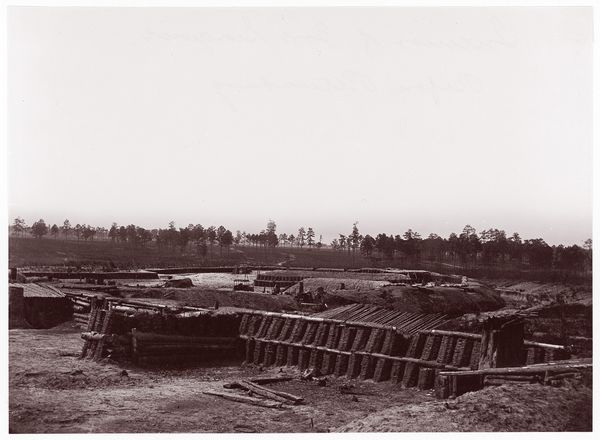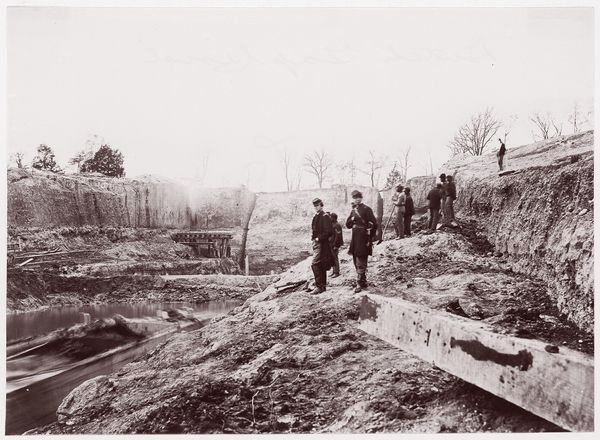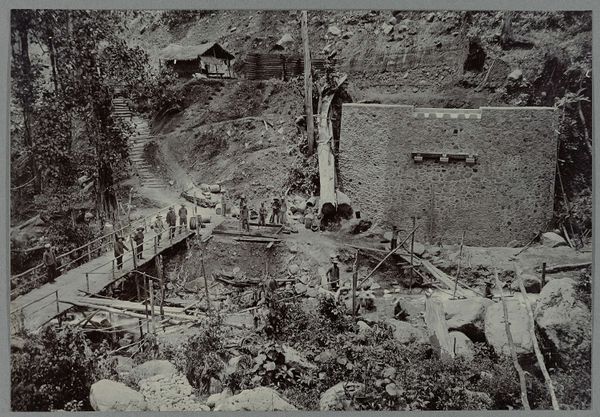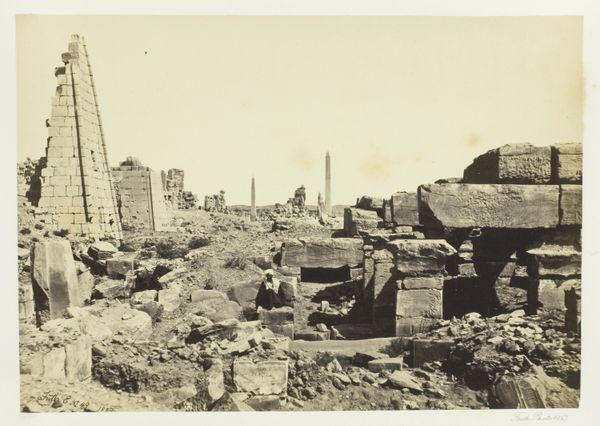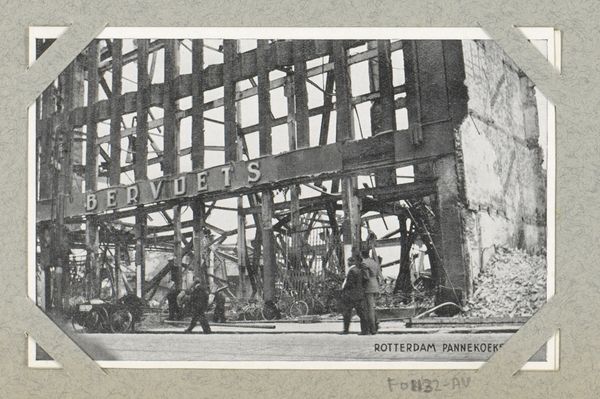
Bouwvakkers ana het werk in een bouwput aan de Van Diemenstraat in Amsterdam c. 1890 - 1910
0:00
0:00
photography, gelatin-silver-print
#
dutch-golden-age
#
charcoal drawing
#
photography
#
gelatin-silver-print
#
cityscape
#
realism
Dimensions: height 505 mm, width 398 mm, height 400 mm, width 300 mm
Copyright: Rijks Museum: Open Domain
Editor: We're looking at "Bouwvakkers aan het werk in een bouwput aan de Van Diemenstraat in Amsterdam," a gelatin-silver print by George Hendrik Breitner, dating roughly from 1890 to 1910. I’m struck by the sheer labor captured in this image – the gritty details of the construction site, the anonymous workers. How do you interpret this depiction of urban development? Curator: For me, this image isn't just a snapshot of urban development. Look at the way Breitner has chosen to represent these workers and their environment. The gelatin-silver print, a relatively new medium at the time, allows for a stark realism, documenting the physical toil inherent in the building process. Think about the materials: wood, earth, metal – all transformed by human labor. Editor: So, you’re focusing on the physicality of the work itself? Curator: Precisely. The photograph becomes evidence of a specific mode of production. The labor, the raw materials, and their transformation – Breitner forces us to confront the materiality of progress and to question the conditions under which these men are working. The photograph aestheticizes the urban transformation, yes, but its artistic gesture is always contingent on the hard conditions of labor it shows us. Consider that he himself was part of a rapidly industrializing Amsterdam and we may consider who truly benefited. Editor: That’s a perspective I hadn’t considered. So, rather than just seeing a cityscape emerging, you see a commentary on the process of building, both literally and figuratively. Curator: Exactly. It prompts us to think about how cities are made and at what cost, which has interesting cultural and class-based components when considered today. What initially reads as Realism takes on another meaning through this perspective. Editor: That's a really interesting way of looking at it. It definitely makes me see the image in a different light. Thanks! Curator: My pleasure. Hopefully, it is an inspiration for us all to continue learning.
Comments
No comments
Be the first to comment and join the conversation on the ultimate creative platform.
